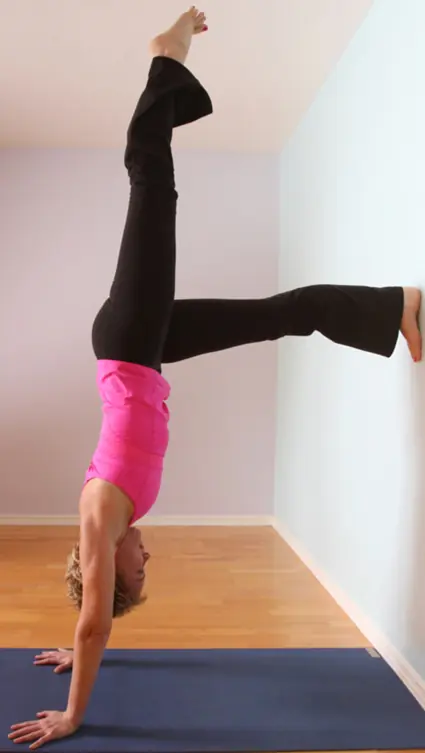The dictionary definition of "invert" is to "put upside down or in the opposite position, order, or arrangement." In yoga, inversions are sometimes broadly defined as positions in which the heart is higher than the head.
More: The ABCs of Yoga Styles
Practitioners who spend time upside down report benefits ranging from better sleep, focus and digestion, to seeing the world from a different perspective. Shifting your body's relationship to gravity may improve various physiological functions, such as lymphatic drainage and the return of blood to the heart.
Before embarking on inversions, you'll want to develop a combination of core and upper body strength as well as hamstring flexibility, so that you can enjoy being upside down without creating stress, strain or injury.
More: Yoga Poses to Prevent the Top Sports Injuries
The Handstand Preparation strengthens the core, shoulders, arms and wrists.
Instructions:

Kneel down on the floor on all fours with your back to a wall. Place your toe tips against the base board.
Straighten your legs and press the heels of your feet into the baseboard. If your shoulders are tight, turn your index fingers out slightly.
On an exhale, bend one knee and press the foot onto the wall in line with the buttock. Step the other foot onto the wall so that your legs are parallel to the floor and form a right angle. Press the soles of your feet into the wall.
Lift one leg into the air, creating a straight line, as you continue to press the sole of the opposite foot into the wall. Stay for five seconds, breathing deeply. Switch sides.
More: How Yoga Can Boost Your Immune System
 Find a yoga class that's right for you.
Find a yoga class that's right for you.



